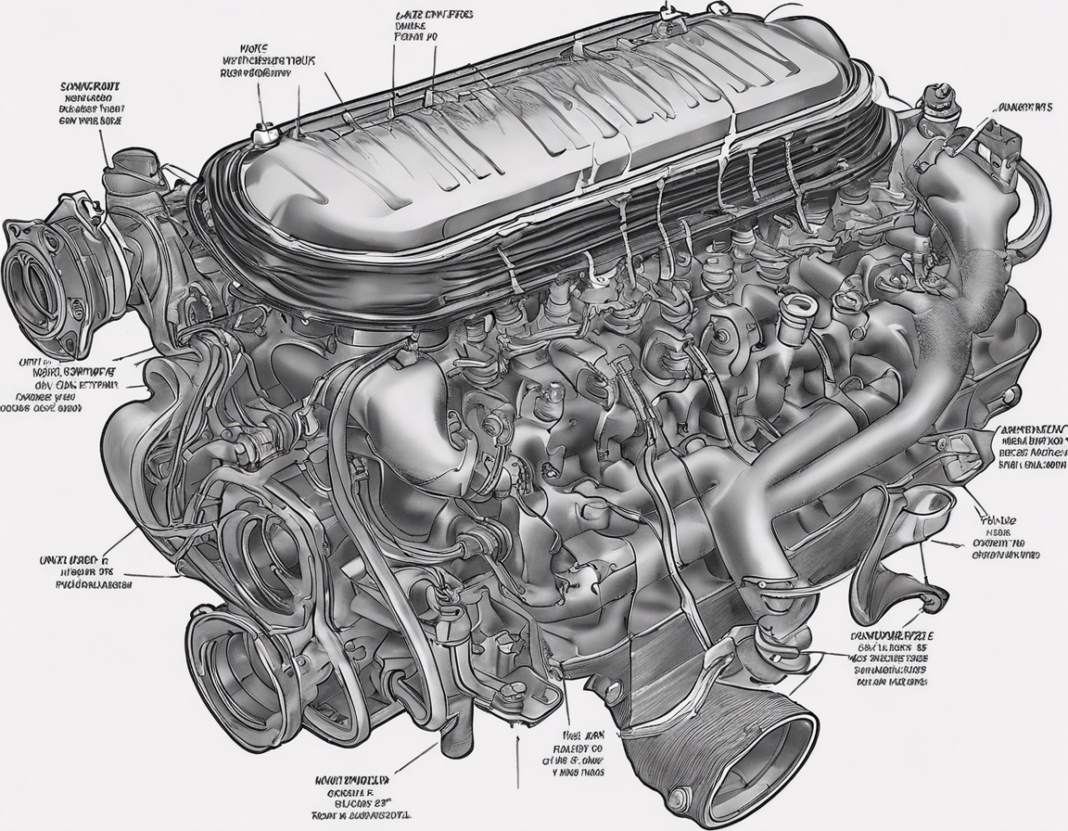When it comes to engine performance, the intake manifold plays a crucial role in ensuring the proper distribution of air-fuel mixture to the cylinders. A vacuum leak in the intake manifold can disrupt this process, leading to various issues that can affect the overall performance of the engine. In this article, we’ll discuss the common symptoms of an intake manifold vacuum leak and how to identify them.
Understanding Intake Manifold Vacuum Leaks
Before diving into the symptoms, it’s important to understand what causes an intake manifold vacuum leak. Vacuum leaks occur when there is an unintended crack or hole in the intake manifold, allowing excess air to enter the system. This disrupts the air-to-fuel ratio, leading to a mixture that is too lean for proper combustion. Vacuum leaks can be caused by a variety of factors, including worn gaskets, cracked hoses, or loose connections.
Common Symptoms of an Intake Manifold Vacuum Leak
-
Rough Idle: One of the most common symptoms of a vacuum leak in the intake manifold is a rough idle. The engine may idle erratically or stall when the vehicle is at a stop.
-
Misfiring: A vacuum leak can disrupt the air-fuel mixture in the cylinders, leading to misfiring. This can result in a loss of power, hesitation during acceleration, and overall poor engine performance.
-
Increased Fuel Consumption: Since a vacuum leak can lead to a lean air-to-fuel ratio, the engine may compensate by injecting more fuel. This can result in increased fuel consumption and decreased fuel efficiency.
-
Check Engine Light: A vacuum leak can trigger the Check Engine Light on the dashboard. The onboard diagnostics system may detect the lean condition caused by the vacuum leak and store a corresponding trouble code.
-
Hissing Noise: In some cases, a vacuum leak in the intake manifold may produce a hissing noise. This can often be heard coming from the engine bay when the vehicle is running.
-
Poor Acceleration: A vacuum leak can disrupt the engine’s performance, leading to poor acceleration and sluggish throttle response. The vehicle may feel underpowered and struggle to reach higher speeds.
How to Identify an Intake Manifold Vacuum Leak
If you suspect a vacuum leak in the intake manifold based on the symptoms mentioned above, here are some steps to help you identify and confirm the issue:
- Perform a visual inspection of the intake manifold, looking for any signs of cracked hoses, loose connections, or damaged gaskets.
- Use a smoke machine to pressurize the intake system and identify any leaks by observing where the smoke escapes.
- Spray a soapy water solution along the intake manifold and vacuum lines while the engine is running. If there is a leak, the solution will bubble at the source of the leak.
Frequently Asked Questions (FAQs)
- Can a vacuum leak damage the engine?
-
While a small vacuum leak may not cause immediate damage, prolonged operation with a vacuum leak can lead to issues such as poor engine performance, increased fuel consumption, and potential damage to engine components over time.
-
How much does it cost to fix an intake manifold vacuum leak?
-
The cost of repairing an intake manifold vacuum leak can vary depending on the extent of the damage and the labor rates in your area. It’s best to consult with a mechanic for an accurate estimate.
-
Can I drive with a vacuum leak in the intake manifold?
-
It is not recommended to drive with a vacuum leak, as it can lead to poor engine performance, decreased fuel efficiency, and potential long-term damage to the engine.
-
Are there any temporary fixes for a vacuum leak?
-
While there are temporary solutions such as using sealants or tape to cover small leaks, it’s best to address the root cause of the issue by properly repairing or replacing the damaged components.
-
How long does it take to repair an intake manifold vacuum leak?
- The time it takes to repair an intake manifold vacuum leak can vary depending on the severity of the leak and the availability of parts. In some cases, it can be fixed in a few hours, while more extensive repairs may take longer.
Understanding the symptoms of an intake manifold vacuum leak and knowing how to identify them can help you address the issue promptly and prevent further damage to your vehicle’s engine. If you experience any of the mentioned symptoms, it’s advisable to consult a qualified mechanic for a thorough inspection and proper repair.

